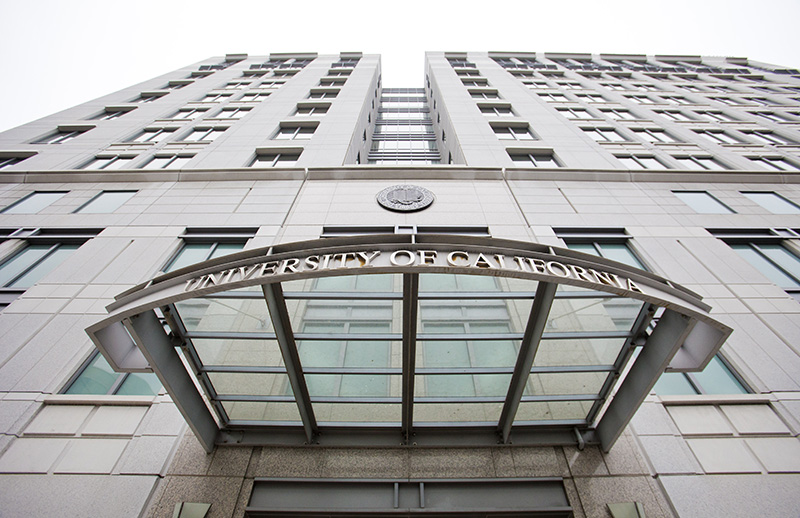In response to the emergence of highly-transmissible variants and the rapidly changing nature of the pandemic, UC San Diego Health recently established new COVID-19 guidelines on March 17 in a memo distributed to staff. The guidelines emphasize the continued use of wastewater testing to assess COVID risk based on the concentration of the virus in sewage, and seeks to take preventative action to limit virus spread.
While these guidelines are only applicable to the hospitals, clinics, and facilities of the UCSD Health system, they will be a blueprint for future COVID policy on campus. The Return to Learn program, which directs on-campus COVID strategy, is currently developing similar new guidelines to manage COVID in the long term.
In a comment to The UCSD Guardian, UCSD Health Chief Medical Officer Chris Longhurst said, “We’ve developed in the health system what we call ‘new normal’ guidelines. That was done very intentionally because we’ve been in this sort of reactive state of emergency for many years now, and we wanted to become more proactive,”
UCSD Health guidelines currently split risk into three tiers of COVID risk that are based on wastewater concentrations of the virus collected at the Point Loma water treatment plant. Less than one million virus copies per liter are considered lowest risk. One to three million copies are considered medium risk, while more than three million copies fall in the highest risk category.
According to Dr. Robert “Chip” Schooley, an infectious disease specialist at UCSD Health, Return to Learn is developing a similar blueprint to manage COVID on-campus. The Return to Learn guidelines will feature a similar blueprint, based on tier levels. At the lowest tier, masking guidelines would be most relaxed and in-person events would be fully permitted. Restrictions would increase with each tier.
Schooley serves on the Return to Learn Steering Committee, and is involved in the monitoring of data and operations in the program. He elaborated on the unique considerations of the on-campus strategy, including the logistics.
“The hospital worries about having enough beds for patients and enough staff to take care of them,” Schooley said. “But we have to worry about whether we have isolation housing for students, or what we should do about events, or whether classes should occur in person or in a hybrid way.”
Wastewater testing will be a key component of both the Return to Learn Program and UCSD Health’s management strategies. The decision to focus on wastewater was based on research by Longhurst and colleagues detailing the effectiveness of wastewater testing in predicting COVID surges.
“The paper showed that wastewater testing at Point Loma forecasted cases of [the COVID variant] Delta two to three weeks in advance. […] If we want to make changes in a way that’s proactive as opposed to reactive, we want to do it before the cases rise […] And therefore, we hinged a lot of our thresholds on the wastewater,” Longhurst said, while adding that other factors are also considered, such as the presence of a new variant.
Similarly, Return to Learn guidelines will focus on on-campus wastewater testing as a major indicator of on-campus virus prevalence.
“We’re going to watch the wastewater very carefully. We think that’ll be the first indicator here in San Diego that [COVID numbers] are picking up. If we see an uptick in activity here […] then we might say to people that we need to re-mask in various areas, start more routine testing and adjust our approach based on viral activity.” Schooley said.
However, wastewater testing would not be the only factor structuring the Return to Learn guidelines. For example, the presence of more transmissible variants could mean higher levels of risk even if wastewater concentrations are lower. According to Dr. Schooley, this allows for health officials to gain greater understanding of COVID spread and react accordingly.
“We still want to […] make decisions that are based on the whole integrated group of facts, rather than getting locked into something that might actually be the wrong decision because we set some tripwire,” Schooley said.
Schooley emphasized the flexibility of the new guidelines, with ample room for Return to Learn health officials to adjust their approach depending on how the pandemic develops. He added that while UCSD is currently at low-risk based on wastewater levels, corresponding policy could change according to wastewater levels.
“We’re still having students mask on buses, but that may change if the level of our activity continues to decline and things look really good in the summer. We are going to be continuing to adjust our recommendations based on the parameters we’re looking at,” Schooley said.
While the on-campus Return to Learn framework remains in development, Longhurst has published further details on the UCSD Health framework on social media, while county-wide wastewater data collected by UCSD Health is regularly updated online.














Ada • Apr 22, 2022 at 6:50 am
I think that many companies should reconsider their rules and make them safer but also more free. I’m already a little tired of doing tests on the site https://personichealthcare.co/ for every occasion of going to an event, trip or just visiting a restaurant